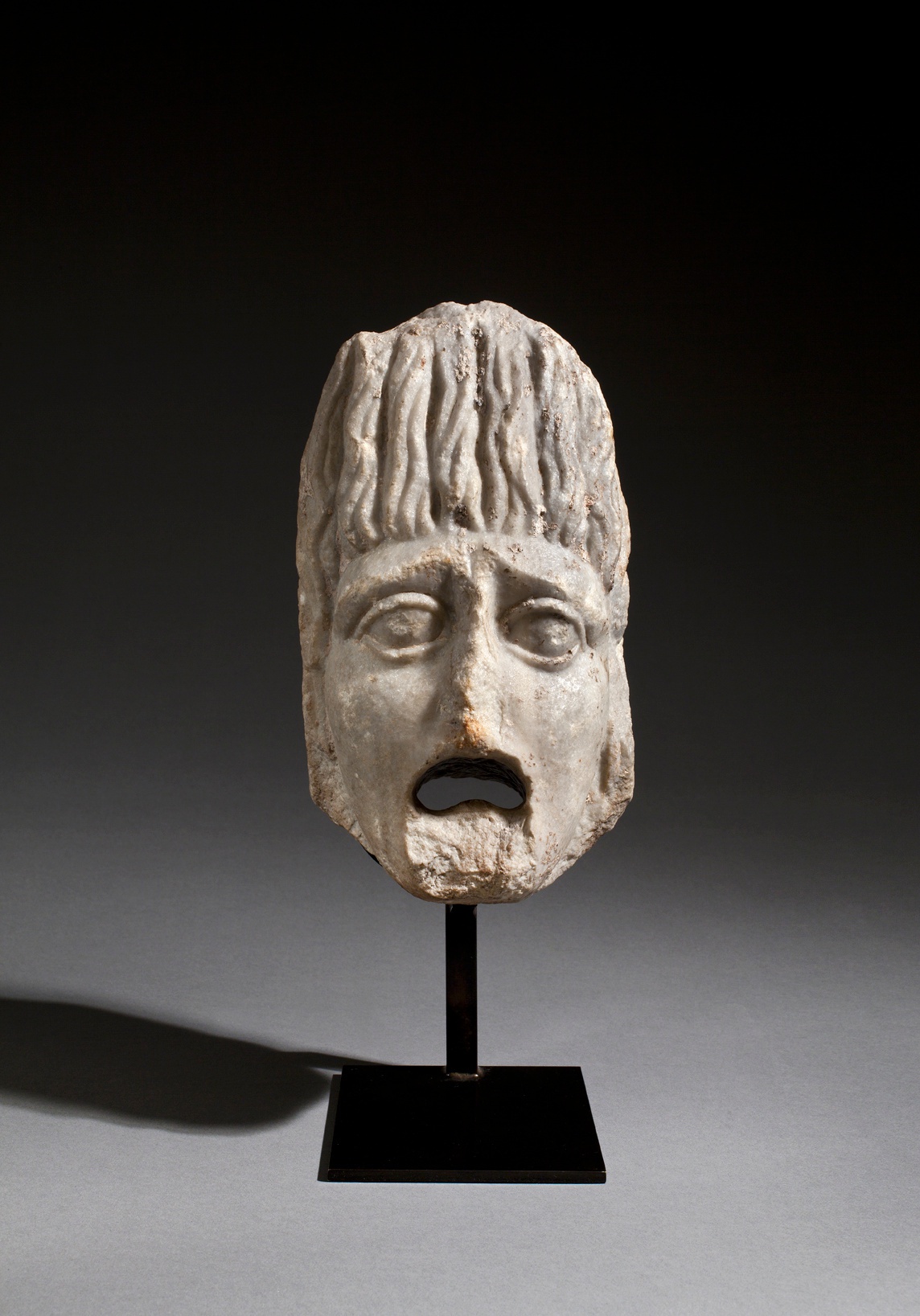
I wonder what state of mental health we have all reached after however many weeks it's been of working from home during this state of lockdown? Maybe we have risen above it all, as serenely as the Egyptian head of Osiris in our last post, or perhaps this Roman marble sculpture more accurately sums-up what we might be feeling: that sound of screaming isn't necessarily from the TV, stop and listen, it could be you…
Images of theatre masks, both comic and tragic, are discovered right across the ancient Roman Empire, and in places not necessarily connected to the theatre. They appear on mosaic floors, as frescoed decoration on walls, as protomes and oscilla which were suspended from buildings and moved when caught by the breeze (hence oscillate!) It's not unusual to find them featured in panels carved in high relief, often on both sides, which would have decorated the gardens of the wealthy elite. The mask of the tragic actor was also commonly used as a decorative motif on sarcophagi and cinerary urns. Bronze masks abound as attachments to vessels and the like. Practically from the cradle to the grave, theatre was a vital component of Roman life, indeed theatres constitute some of the largest buildings to survive from ancient times.
We are, right now, unable to experience the particular pleasures derived from sitting close to others in a shared space, looking-on whilst actors inhabit and flesh-out the words of fictional characters, bringing them to life, striding the stage, making us cry, making us laugh, showing us - as all art does - ourselves.
Today, it is not the actors treading the stage who wear the masks, but the rest of us. And the drama played-out is our daily life…
Roman architectural theatre mask
1st-2nd century AD
Marble
Height 21cm
Provenance
Kenzo Takada, Paris, France; acquired early 1980s
Tragic theatre mask of a woman, the mouth drilled through, possibly as a water spout. She wears an onkos that towers over her forehead and from which twisted locks fall. The back is roughly worked to a point for insertion into a recess.